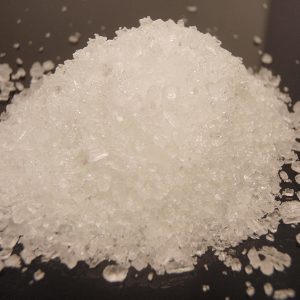Ammonium sulphate

Specifications
| Quality Items | Quality Index | |||||
| Supperior product | First class product | Quality product | ||||
| Apperance | White (no visible mechanical debris | No visible mechanical impurities | No visible mechanical impurities | |||
| Nitrogen (N) content (based on dry base),%> | 21.0 | 21 | 20.5 | |||
| Moisture (H2O),%< | 0.2 | 0.3 | 1 | |||
| Free acid (H2SO4),% < | 0.03 | 0.05 | 0.2 | |||
Packing & Storage
| Packing | Packed in composite plastic woven bags, the quality of a single package is about 240kg; | |||||||
| Storage | Store in a cool, ventilated warehouse. Keep the container sealed. Prevent moisture and rain. It should be stored separately from hypochlorites, edible chemical raw materials, etc.Smoking, drinking, and eating are not allowed at the operation site; | |||||||
| Transportation | When handling, it should be lightly loaded and unloaded to prevent damage to the packaging and containers. Personal protection should be paid attention to during packing and handling operations. | |||||||
Free Quote
At present, the company has more than 10 advanced production lines of the hollow glass microspheres with the annual production capacity of 15 thousand tons. To meet the demand of customers, the company can expand production capacity as soon as possible within 20 days. 6S principles Implemented in the production systems.
For samples, pricing, or more information, please call us at 0086 25 51192301 or mail to info@ascent-chem.com or fill out the following form. We will respond to you as soon as possible.
Tel: 0086 25 51192301
E-mail: info@ascent-chem.com


General Information
| Common Names | Ammonium sulphate | |||||||
| Structure | H8N2O4S | |||||||
| CAS No. | 7783-20-2 | Boiling Point (℃) | 330ºC at 760 mmHg | |||||
| Molecular Weight | 132.139 | Melting Point (℃) | 280ºC | |||||
| Appearance | Fine white crystals or as hygroscopic granules. | Density | 1.76 | |||||
| LogP | 0.75190 | Flash Point | 26 °C | |||||
| Water Solubility | H2O: 1 M at 20 °C, clear, colorless | 77 g/100 mL (25 ºC | HS code | 3102210000 | |||||
| Safety Phrases | S26-S37/39 | ||
| RIDADR | UN 1170 3/PG 3 | ||
| WGK Germany | 1 | ||
| Personal Protective Equipment | Eyeshields;Gloves;type N95 (US);type P1 (EN143) respirator filter | ||
| RTECS | AT6977900 | ||
| FIRST AID | |
| Inhalation | Leave the scene to a place with fresh air. Give oxygen when you have difficulty breathing. When breathing stops, perform artificial respiration immediately. Seek medical attention. |
| Skin | Rinse thoroughly with soapy water and clear water. Seek medical attention.. |
| Eyes | Open the eyelids and rinse with flowing water for 15 minutes. Seek medical attention. |
| Ingestion | Those who take it by mistake, drink an appropriate amount of warm water to induce vomiting. Seek medical attention. |
1. Neutralization method Ammonia and sulfuric acid are neutralized at about 100℃, and the resulting crystal slurry of ammonium sulfate is separated by centrifugation and dried to obtain a finished product of ammonium sulfate. its
The recovery method is obtained by recovering ammonia from coke oven gas and then neutralizing it with sulfuric acid.
Frequently Asked Questions
The Role and Use of Ammonium Sulfate
Ammonium sulfate (NH4)2SO4 is an inorganic salt commonly used in various industries and applications. Here are some of its roles and uses:
1. Fertilizer: Ammonium sulfate is widely used as a nitrogen fertilizer in agriculture. It provides readily available nitrogen to plants, supporting their growth and development. The sulfate component also supplies sulfur, which is an essential nutrient for plant health.
2. pH Control: Ammonium sulfate can be used to adjust the pH of soil or water. It is acidic in nature and can lower the pH when needed. This makes it useful for acidifying alkaline soils or adjusting the pH of certain industrial processes.
3. Protein Precipitation: Ammonium sulfate is commonly used in biochemistry and molecular biology laboratories for protein purification and precipitation. By adding ammonium sulfate to a solution containing proteins, it helps to precipitate and separate them from other components.
4. Flame Retardant: Ammonium sulfate is used as a flame retardant in certain materials, including textiles and plastics. It works by releasing ammonia and sulfur dioxide when exposed to heat, which dilutes the flammable gases and inhibits combustion.
5. Industrial Applications: Ammonium sulfate finds applications in various industrial processes. It is used in the production of dyes and pigments, as a food additive, and in the manufacturing of pharmaceuticals and chemicals.
6. Food Additive: Ammonium sulfate is an approved food additive (E517) by regulatory authorities in some countries. It is used as a dough conditioner, yeast nutrient, and stabilizer in baking and food processing. It helps improve the texture, stability, and shelf life of baked goods.
7. Brewing and Fermentation: Ammonium sulfate is sometimes added to brewing water or fermentation media in the beer and wine industries. It provides yeast with a source of nitrogen, aiding in fermentation and promoting the growth of desired yeast strains.
8. Laboratory Reagent: Ammonium sulfate is used as a reagent in various laboratory procedures. It is often employed for protein crystallization, as a reagent in certain chemical reactions, and as a source of nitrogen and sulfur in microbial culture media.
Contact Us
TEL: 0086 25 51192301
EMAIL: info@ascent-chem.com
EMAIL: sophiahoney247@gmail.com
Copyright © Ascent Sbr All Rights Reserved.

